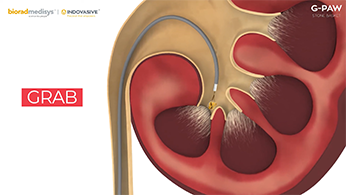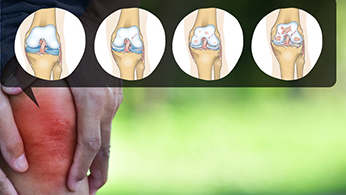The knee is the largest joint in the human body and osteoarthritis (OA) is the most frequent form of arthritis affecting this joint. With this disease, the functionality of the joints get affected resulting in knee pain and further progression can lead to disability.
It is also called as ‘wear and tear’ arthritis and can remain undetected for years because patients do not recognize or experience symptoms, leading to progression of the disease to the point of significant damage. This condition is difficult to treat as the symptoms may appear only in the advanced stages of the disease.
- Stage 0 (Normal): Normal or healthy knee with no signs of OA and the joint functionality progresses without pain or impairment.
- Stage 1 (Doubtful): The cartilage may be slightly damaged and there can be development of small bony growths known as bone spurs. The patient at this stage may not experience pain as there is slight wear in the joint. Generally, the diagnostics may not reveal the problem at this stage making detection of OA quite difficult.
- Stage 2 (Mild): The X-ray can detect greater bone spurs but the cartilage remains at a healthy size and there is no friction between the bones. The lubrication of the synovial fluid is still intact and it supports the movement of the knee. Patients may experience pain after long periods of walking, and stiffness in the joint when it has not been in use for several hours.
- Stage 3 (Moderate): There is progressive damage to the cartilage, narrowing of the space between the bones, and X-ray reveals significant cartilage loss. Patient experiences significant discomfort on daily activities like walking, bending, and exercise can aggravate the condition resulting in joint inflammation. Swelling, popping sounds, joint stiffness can also be noted and consultation with the doctor is warranted if you experience any of these symptoms.
- Stage 4 (Severe): There is a complete cartilage break down, lack of synovial fluid resulting in bone-bone friction and the patient can experience excruciating pain with discomfort on simple movements. More bone spurs can be noticed and in the most advanced cases, bones can get deformed or angulated due to asymmetrical cartilage loss.
A total knee replacement surgery can be life changing and the rehabilitation process plays a crucial role in helping you bounce back and resume an active lifestyle. Read on to understand the recovery process and what you can expect in the first 12 weeks’ post-surgery and beyond:
Post-op after surgery:
Drainage tubes can be placed for the collection of blood around the knee, IV (intra-venous) line, and compression stockings to aid in the smooth flow of blood.
- Day 1: Your therapist helps you to get back on your feet as blood flow to your legs is pivotal in recovery. You will be trained to move around with assistive devices like walkers, or crutches and exercises are taught to strengthen the muscles. A continuous passive machine (CPM) can be set up to help in flexion and extension of the knee.
- Day 2: The movement is increased and you may be asked to walk a brief distance using the assistive device. The CPM machine may be continued and your activity level should increase with complete knee extension and 10° flexion.
Discharge:
Your activity level significantly increases and the goals achieved can be
- i) getting on and out of bed
- ii) walking 25 feet or using the stairs with assistive devices
- iii) achieving 70-90° range of motion with your knee.
- Weeks 1-3: You should be less-reliant on the assistive device for your daily activities and adhere to the exercises prescribed by the therapist.
- Weeks 4-6: With adherence to the rehabilitation process, you can notice a dramatic improvement in your range of motion with the knee. Walking, climbing stairs and household chores can be performed with the gradual weaning on the assistive device.
- Weeks 7-12: There will be a complete range of motion with flexion of your knee and a significant decrease in pain. You can enjoy your low-impact activities and continue the at-home exercises.
- Week 13 and beyond: The pain can get subsided completely and improved movement of the knee can be noticed. Generally, complete recovery can take anywhere from 3 to 12 months and can vary according to individuals.













Leave a comment